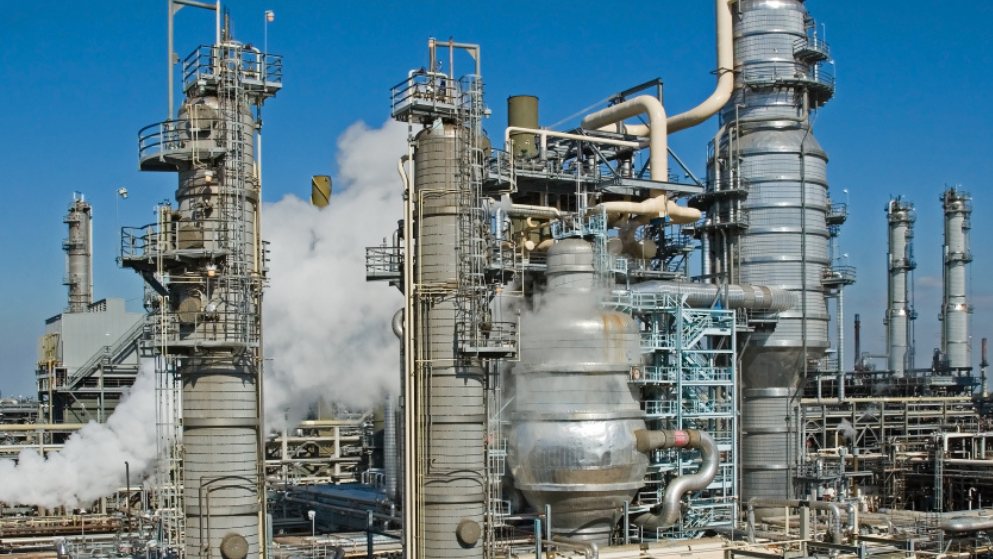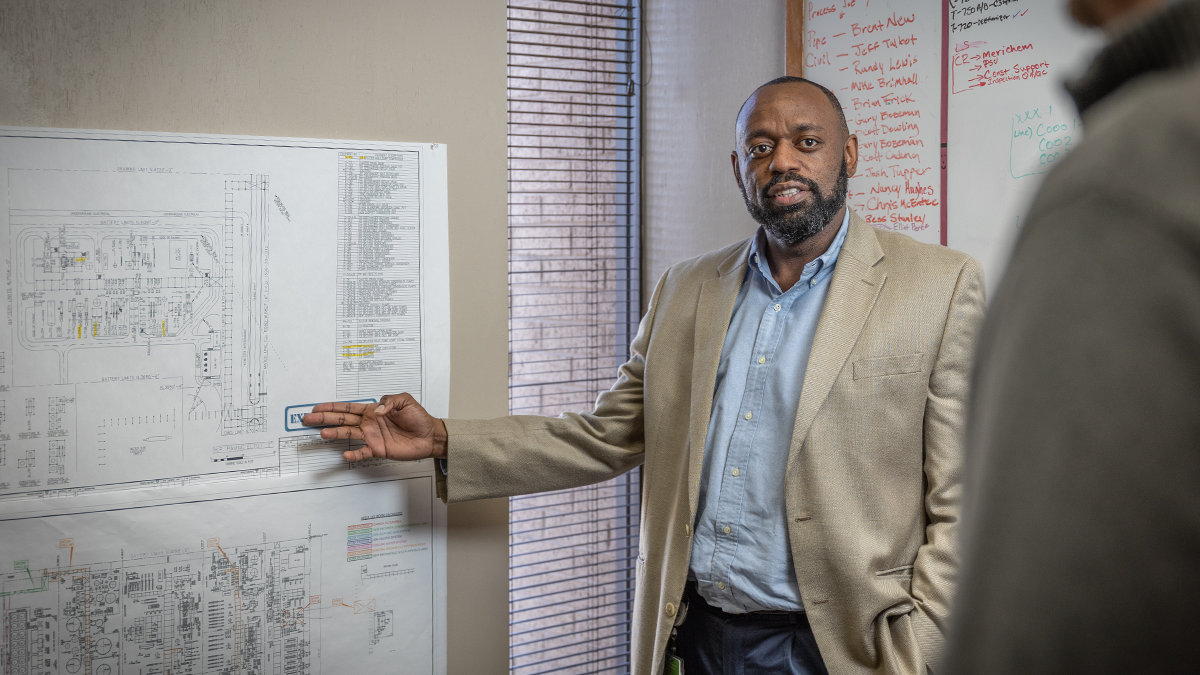FIRST IN A SERIES OF POSTS: WHAT EXACTLY IS CLEAN HYDROGEN?
The new Section 45V production tax credit (45V PTC) marks one of the most significant incentives out of last August’s Inflation Reduction Act (IRA). The 45V PTC applies to clean hydrogen production and has already spurred a substantial uptick in hydrogen project development activity.
In the first of a series on the 45V PTC, we briefly summarize the tax credit and consider a fundamental yet deceptively simple question: What exactly is clean hydrogen?
THE 45V PTC OVERVIEW
Like the existing wind energy production tax credit, the newly added 45V PTC provides an income tax credit for every kilogram of qualified clean hydrogen produced, similar to kilowatt hours of wind energy. The tiered tax credit enables lower carbon-intensity (CI) hydrogen to receive a higher 45V PTC amount (see Table 1).
The inflation-adjusted 45V PTC applies for 10 years following the date a project begins operation. Like other provisions in the IRA, a project must pay the prevailing wage to receive the full 45V PTC amount. In addition, it must utilize qualified apprentices for a certain percentage of the project’s total construction and operations manhours.

Table 1 – The 45V PTC tiers
The per-kilogram 45V PTC amounts are a game changer. Based on what we’ve seen, companies can purchase hydrogen for $1.00 to $1.50 per kilogram, depending on various factors. For many projects, the tax credits will be worth more than the hydrogen itself, making clean hydrogen projects (and clean hydrogen-carrier projects) more economical than traditional hydrogen projects.
For example, consider a 100-megawatt (MW) green hydrogen project, producing 15 million kilograms annually using electrolysis. This project could qualify at the $3.00 per kilogram tier. That’s $45 million annually or $450 million over the 10 years in incentives. (And don’t forget, these are 2022 “real” dollars, as the 45V PTC is indexed to inflation).
Similarly, consider a blue hydrogen project, producing 500 metric tons per day (MTPD) or 175 million kilograms annually. If the project can qualify for the 45V PTC at the $1.00 per kilogram tier, that’s $175 million per year, more than 1.8 billion dollars over the 10-year period. Even at the lowest CI score tier of $0.60 per kilogram, that’s still more than a billion dollars in incentives (see Table 2).
These large numbers make green hydrogen projects economical and make blue hydrogen projects highly attractive.

Table 2 – Examples of Annual PTC Amounts
While this may sound straightforward (not to mention exciting), the IRA legislation generated several important questions for clarification. As a result, in November, the IRS issued a Request for Comments on particular elements of the 45V[1] PTC, and more than 180 comment letters were submitted.
CLEAN HYDROGEN DEFINITION
The question most fundamental to the 45V PTC is: what exactly qualifies as clean hydrogen. The IRA defines “qualified clean hydrogen” as hydrogen that meets the following criteria[2]:
1. Produced through a process with a lifecycle greenhouse gas emissions rate of fewer than four kilograms of CO2e per kilogram of hydrogen
2. Produced in the United States or a possession of the United States
3. Produced “in the ordinary course of a trade or business of the taxpayer”
4. Produced “for sale or use”
5. An unrelated party verifies the “production and sale or use of such hydrogen”
At first glance, this seems clear. Projects that produce hydrogen as an end product would qualify, provided that they meet the CI score and other requirements.
While green hydrogen receives most of the attention, the IRA legislation allows other production pathways, such as blue hydrogen produced utilizing carbon capture. Based on publicly available information and our analyses, blue hydrogen projects can achieve at least the lowest tier CI score requirements.
But what about projects producing hydrogen as an intermediate product to manufacture a hydrogen carrier, such as ammonia (NH3) or methanol (CH3OH)?

Ammonia and methanol are more valuable and practical than hydrogen for many applications. For example, ammonia (used to produce fertilizer) and methanol (used to create numerous chemicals and consumer products) see growing demand as fuel. Indeed, half of all hydrogen production makes ammonia and methanol, according to the IEA[3].
Ammonia and methanol production typically begins by producing a synthesis gas (syngas) from steam and natural gas using a steam methane reforming process. Modern blue technologies remove the CO2 from the syngas, a process known as pre-combustion removal. Syngas compositions vary, but they typically contain 50% to 80% hydrogen, with the rest being carbon monoxide, carbon dioxide (until removal) and water.
So, is the hydrogen contained in syngas “qualified clean hydrogen”? This question may hinge on whether the IRS sets a minimum hydrogen purity requirement.
In some ammonia production processes, the syngas is converted into a high-purity hydrogen stream and then combined with nitrogen to make ammonia in some major ammonia production processes. Therefore, even if the IRS sets a minimum hydrogen purity requirement, ammonia projects using this process would likely still qualify.
For methanol production, however, the carbon monoxide must remain in the syngas to make the methanol (CH3OH), rendering the question of a minimum purity requirement particularly important. For example, if the IRS sets a minimum hydrogen purity requirement, would a blue methanol project need to separate the hydrogen from the syngas – only then to recombine it – to qualify for the 45V PTC?
The questions become even further complicated by a separate Department of Energy (DOE) effort to create a Clean Hydrogen Production Standard (CHPS). The 2021 Infrastructure Investment and Jobs Act (IIJA) tasked DOE with creating this hydrogen standard to guide its separate programs, most notably, the Regional Clean Hydrogen Hubs.
In September, DOE released a draft of the CHPS, which aligns with the IRA on the four-kilogram CO2e CI score target[4]. In addition, the draft embraces blue hydrogen production, noting that hydrogen produced via steam methane reforming with carbon capture can likely achieve the CI score target. The draft also mentions hydrogen carriers, such as methanol, although it doesn’t comment on the questions related to the applicability to syngas.
In the CHPS draft, DOE aligns with the IRA legislation in considering lifecycle greenhouse gas emissions from a well-to-gate perspective and provides more detail about what this encompasses (see Figure 1).

Figure 1 – DOE lifecycle system boundary[5]
DOE clarifies that to enable consistent comparisons, their four-kilogram CO2e CI score target corresponds to hydrogen at 99% purity and three megapascals (MPa) of pressure (about 435 psi).
So, does DOE consider hydrogen at less than 99% purity not “clean hydrogen”? Might the IRS adopt a 99% minimum purity requirement?
(We don’t interpret DOE’s comment as establishing a minimum purity threshold. Instead, we interpret it as simply clarifying the basis to be used in the emissions analysis).
And what about the pressure? Is DOE saying hydrogen must be at three MPa pressure to qualify as “clean hydrogen”? (Since DOE includes a mechanism for adjusting the emissions calculations if the pressure exceeds three MPa, it would seem they don’t intend this pressure to be a minimum threshold for qualification).
THE SUMMARY
Clean hydrogen production is set to boom, with billions of dollars of investment expected, and the 45V PTC remains a critical component of those investment economics. The IRS has until August 2023 to provide further guidance, although we hear that it might come out in the second quarter. Until then, we wait anxiously like many others.
Contact us today to learn more about 45V PTC.
Disclaimer:
The information in this blog has been provided by S&B for general information purposes. It does not constitute legal, accounting, tax or other professional advice or services and is presented without any representation or warranty as to the accuracy or completeness of the information. For advice relative to any of the categories stated, recipients should consult their own attorneys, accountants, or other professional advisors.
[1] IRS Notice 2022-58; irs.gov/pub/irs-drop/n-22-58.pdf
[2] IRC Section 45V(c)(2)
[3] Source: IEA (2022), Hydrogen, IEA, Paris; www.iea.org/reports/hydrogen
[4] Source: DOE CHPS Draft Guidance; https://www.hydrogen.energy.gov/pdfs/clean-hydrogen-production-standard.pdf
[5] Figure 1 Source: DOE CHPS Draft Guidance; https://www.hydrogen.energy.gov/pdfs/clean-hydrogen-production-standard.pdf




